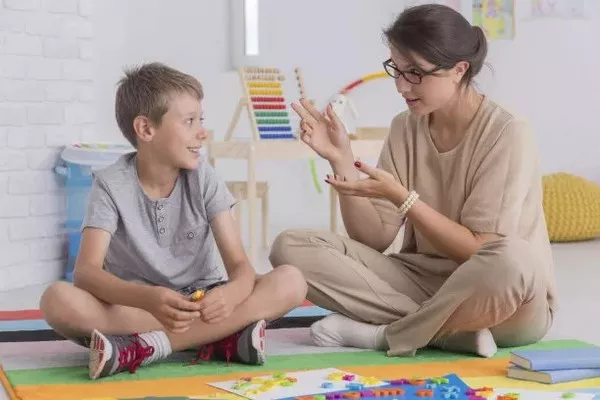The question of whether we are truly in love or merely attached to someone is a common one, particularly in relationships that are deeply emotional or long-term. As a psychologist, I frequently work with individuals and couples who struggle with this distinction. The reason it can be challenging to differentiate between love and attachment is that both feelings can be intense, all-consuming, and deeply connected to one’s emotional well-being. However, while love and attachment share certain similarities, they are fundamentally different in their nature, development, and long-term effects on both individuals and the relationship.
In this article, I will explore the psychological and emotional distinctions between love and attachment, helping you gain insight into the differences and providing guidance on how to recognize each within your own relationships.
Understanding Love and Attachment
Before delving into the specific ways to tell whether your feelings are based on love or attachment, it’s essential to first define both concepts from a psychological perspective.
What is Love?
Love is often considered a complex and multifaceted emotion that involves deep affection, care, commitment, and respect for another person. From a psychological standpoint, love can be broken down into several components:
Emotional Intimacy: Love involves a profound emotional connection where both individuals share their deepest thoughts, vulnerabilities, and experiences. This intimacy fosters mutual trust and understanding.
Unconditional Care: Love involves a genuine concern for the well-being of the other person, often without expecting anything in return. It is not based on the other person’s actions, but on an inherent desire for their happiness and fulfillment.
Selflessness and Sacrifice: In love, there is a willingness to make sacrifices or compromises for the other person’s happiness, without feeling resentment or bitterness.
Mutual Growth: True love supports personal growth, both as individuals and as a couple. Partners help each other become the best versions of themselves, encouraging one another in their pursuits and passions.
Love, in its healthiest form, encourages mutual respect, communication, and emotional connection. It is dynamic, evolving, and based on a deep-rooted emotional bond that remains consistent even through challenges.
What is Attachment?
Attachment, on the other hand, is an emotional bond formed as a result of repeated interactions, care, or dependency. Attachment is rooted in security, comfort, and often a sense of “need” rather than choice. Attachment theories, developed by psychologists like John Bowlby, suggest that humans form attachment styles based on early childhood experiences with caregivers, which influence how they relate to others later in life.
Attachment is not necessarily negative; it’s a fundamental human need. However, attachment in relationships can become problematic when it is based more on dependency, insecurity, and fear of loss rather than mutual love and respect.
The key characteristics of attachment include:
Dependency: Attachments often involve a sense of dependence on the other person for emotional support, validation, or comfort. This dependence may be one-sided or disproportionate.
Fear of Loss: Attachment often includes a fear of abandonment, which can manifest as clinginess, jealousy, or anxiety about the relationship.
Comfort Over Growth: While attachment can provide comfort and security, it may not always encourage personal growth. The relationship may become more about emotional needs being met than mutual development.
Possession and Control: Attachment may lead to possessiveness or a desire to control the other person. This is often motivated by insecurity and fear of being alone.
While attachment is a natural part of human relationships, an over-reliance on attachment can hinder emotional freedom and lead to unhealthy patterns of behavior.
How to Tell the Difference Between Love and Attachment
Given that both love and attachment can trigger intense emotions and longing, it can sometimes be difficult to tell which one you are experiencing. Below are several key psychological signs and characteristics to help differentiate between love and attachment:
1. The Foundation of the Relationship: Choice vs. Need
One of the most significant distinctions between love and attachment is whether the relationship is based on choice or need.
Love: In a loving relationship, both individuals are with each other by choice. Love is built on mutual respect, understanding, and the desire to share your life with the other person. You choose to be with them because you genuinely care about them and value them, not because you need them for emotional validation or fulfillment.
Attachment: In an attached relationship, you may feel that you are with the person because you need them in order to feel secure, loved, or validated. There is often an underlying fear of being alone, and the relationship may feel like a source of security rather than a source of emotional fulfillment or joy. If the relationship ends, you might feel like you have lost a part of yourself.
Ask yourself: Are you with this person because they make you feel secure, or because you genuinely love who they are and enjoy being with them?
2. Emotional Impact of Separation: Anxiety vs. Peace
Another key difference between love and attachment is how you feel when you are apart from the person.
Love: When you are in love with someone, you may miss them when you are apart, but you can still function independently. Your emotional well-being is not entirely dependent on their presence. You feel comfortable with or without them, knowing that the relationship is strong and built on trust.
Attachment: When attachment is at play, separation may cause significant anxiety, fear, or emotional distress. You may find yourself unable to function or feeling incomplete without the other person. You may constantly need reassurance that the relationship is solid and fear that if the person is distant, they may leave you. This anxiety often stems from a lack of emotional security within yourself, rather than a healthy desire for connection.
Ask yourself: When you are apart from this person, do you feel calm and secure in the relationship, or does their absence trigger anxiety, fear, or emotional instability?
3. The Balance of Giving and Receiving: Selflessness vs. Dependence
Healthy love is often characterized by balance in giving and receiving. In a loving relationship, both partners contribute equally to the emotional and practical aspects of the relationship.
Love: Love is selfless. When you love someone, you are invested in their happiness and well-being, even if it requires personal sacrifice. You are not keeping track of what you give or receive, because your joy comes from their joy.
Attachment: Attachment tends to create an imbalance, often with one person relying heavily on the other for emotional validation, comfort, or security. The person who is more attached may demand more from the relationship and may feel empty or lost if their needs are not met.
Ask yourself: Do you feel a sense of fulfillment when the other person is happy, or do you feel that the relationship is more about your own emotional needs being met?
4. Your Sense of Identity: Personal Growth vs. Co-dependency
Love encourages personal growth and the development of a healthy sense of self, while attachment can foster co-dependency.
Love: When you are in love, you feel inspired to grow both individually and as a couple. Love supports your independence and encourages you to pursue your own goals and passions. Your partner supports your personal growth without fear of losing their place in your life.
Attachment: Attachment can often result in co-dependency, where you may feel like you cannot function without the other person. There is a tendency to prioritize the other person’s needs over your own, and your sense of identity becomes overly intertwined with them.
Ask yourself: Do you feel supported in your personal growth and independence, or do you feel like you lose a part of yourself when you are with this person?
5. Conflict Resolution: Understanding vs. Control
Another major distinction is how conflicts are handled in the relationship.
Love: In a loving relationship, conflicts are resolved through communication, mutual understanding, and compromise. You understand that both partners have needs and differences, and you are willing to work through disagreements in a healthy way.
Attachment: In attached relationships, conflicts can trigger feelings of insecurity or fear. Attachment can sometimes lead to unhealthy behaviors, such as controlling actions, manipulation, or avoidance of issues to prevent conflict.
Ask yourself: How do you handle disagreements with this person? Do you work together to solve problems, or do conflicts feel like threats to your emotional security?
Conclusion
The distinction between love and attachment is critical for understanding the dynamics of your relationships. While both are natural human emotions, love is characterized by mutual respect, emotional independence, and personal growth, while attachment is more rooted in dependence, fear of loss, and emotional insecurity.
Recognizing whether your feelings are based on love or attachment can help you navigate your relationship with greater awareness and clarity. If you find that your connection is rooted more in attachment, it may be helpful to work on building your emotional security and self-worth before engaging in the relationship. On the other hand, if you recognize that your bond is built on true love, you can continue nurturing that connection in a healthy and balanced way.
Ultimately, a healthy relationship is one where love thrives—not attachment. Understanding the difference between the two can empower you to make better decisions about your relationships and ensure that they are based on mutual respect, trust, and emotional fulfillment.
Related topics:




















